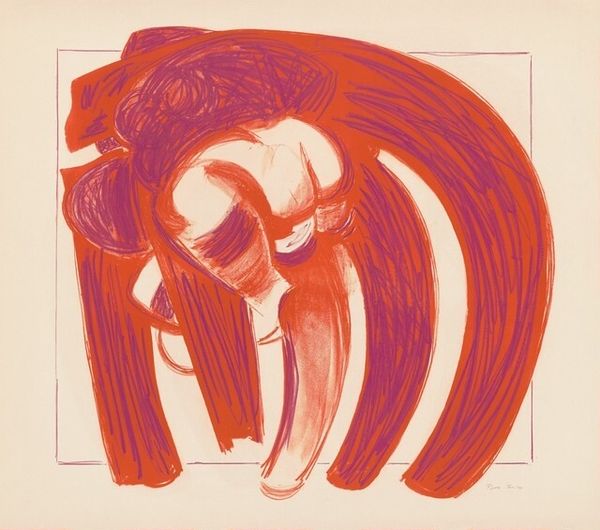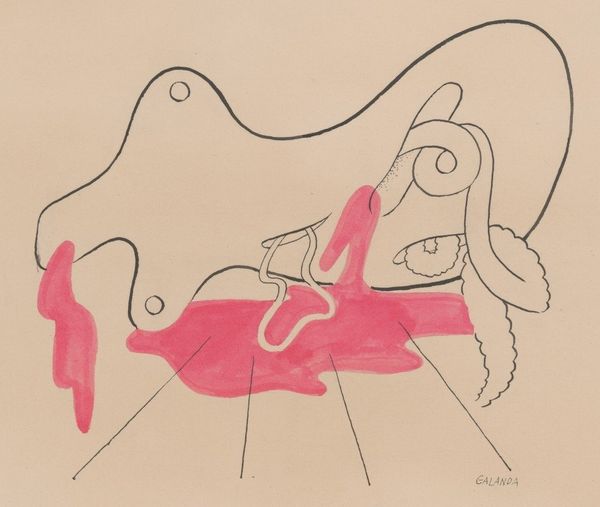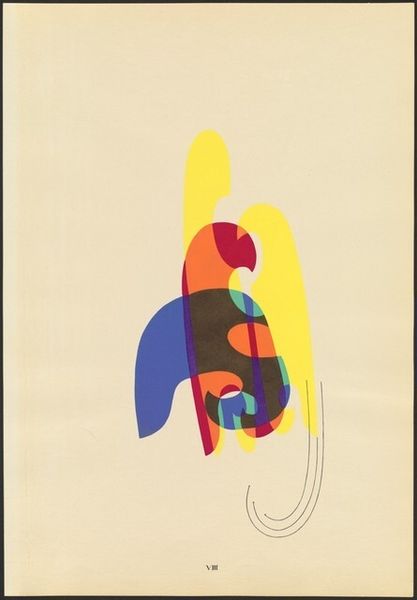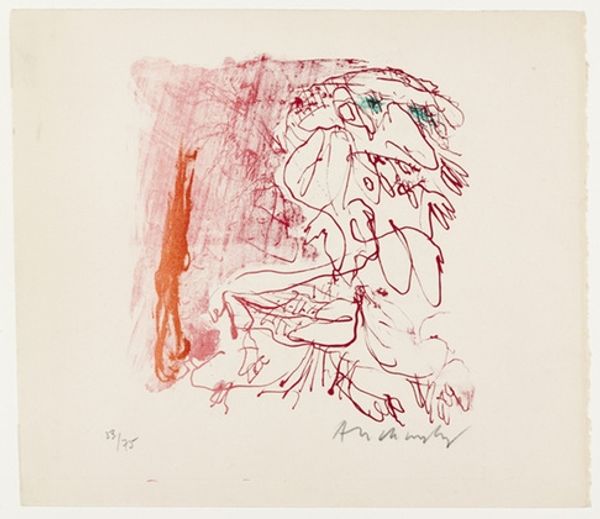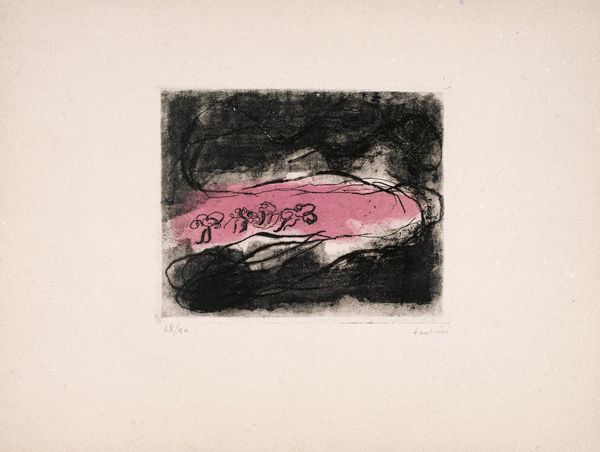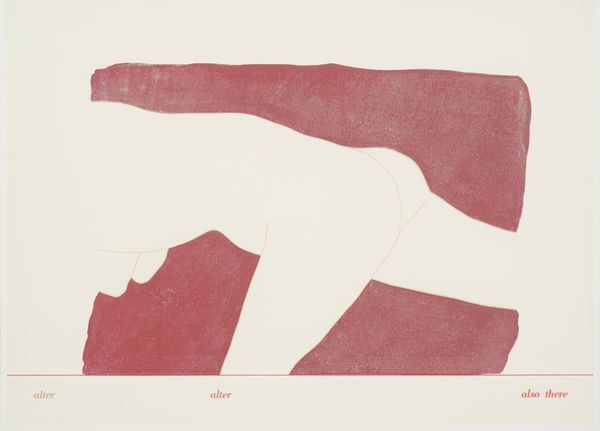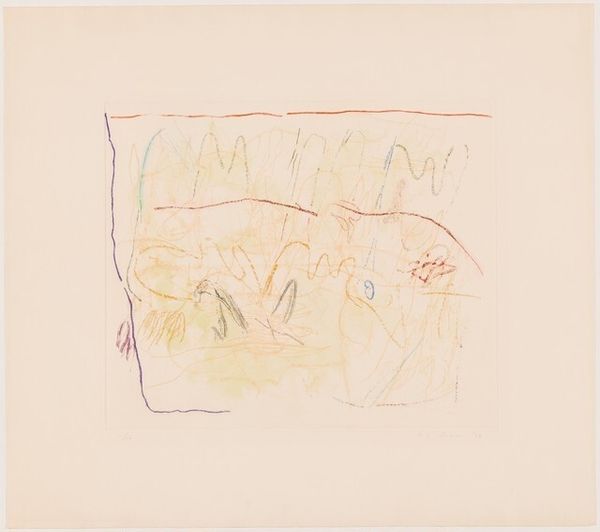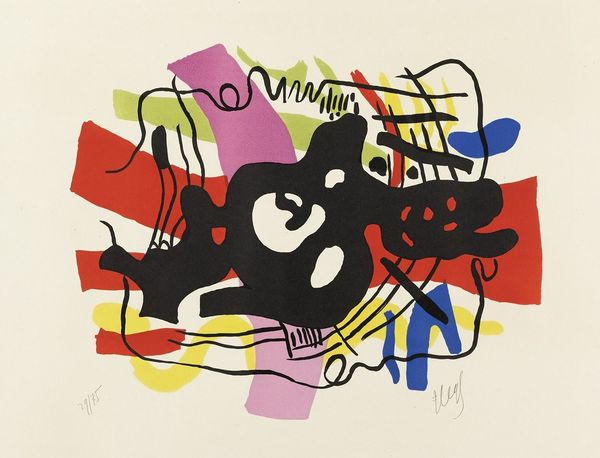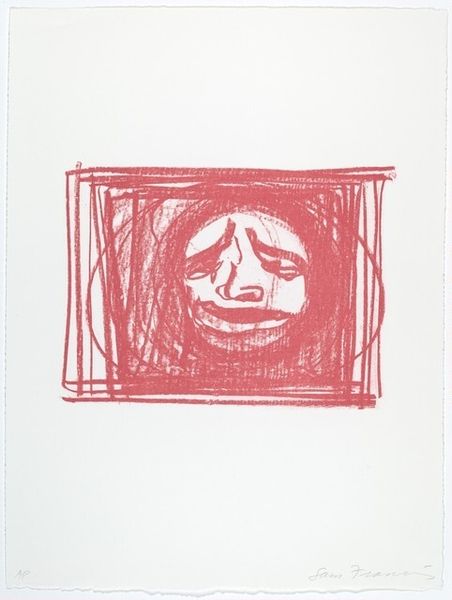
graphic-art, print
#
graphic-art
# print
#
caricature
#
caricature
#
abstraction
#
pop-art
#
line
Copyright: National Gallery of Art: CC0 1.0
Curator: We're looking at Reva Urban's "Title Page" from 1962, a graphic print employing line and abstract elements. The primary color is a vibrant, almost fiery, red. Editor: It hits me with a surprising delicacy despite that strong color. There's a sense of fragility, underscored by the title inscription: "Trembling Then…" It reads like a fleeting memory. Curator: Yes, the inscription complicates the image. Let's consider this print within the context of early 1960s graphic art. It displays a specific kind of labor involving the choices in materials and printmaking processes readily available and deliberately applied at that time. Notice the immediacy of the marks. Editor: For me, the color immediately signifies vitality, energy, even rage. But then that phrase "Trembling Then…" placed near the abstract figure suggests a counter-narrative— a vulnerability perhaps hiding beneath that powerful exterior. It's a striking contrast. Curator: Interesting point. To analyze it from a material standpoint, it is also key to ask what purpose this served in mass communications; what material or social condition does it reflect or reinforce? Editor: Or is it deliberately subversive? Thinking iconographically, the fiery color might also relate to ideas of passion and purification, but trembling also denotes apprehension. Does it reference an earlier, traumatic historical event, a private, personal "trembling," or a universal existential angst about the early 1960s? Curator: The inscription really opens up possibilities for interpretation and speaks to her ability to leverage common graphic art materials to hint toward something that supersedes the limitations of material. The social commentary comes into play depending on how it challenges those pre-established associations. Editor: This piece invites a compelling look beneath the surface, challenging our understanding of symbolism. Even a seemingly simple image can carry multifaceted cultural significance, resonating emotionally with individual histories. Curator: I agree, seeing Urban’s deliberate mark-making, material considerations and deployment in a pop-art style definitely gives it a dimension of accessible cultural critique that holds strong still today. Editor: Absolutely, and by contemplating these interwoven narratives, we unlock a deeper appreciation for the layered complexities of art and human experience.
Comments
No comments
Be the first to comment and join the conversation on the ultimate creative platform.
